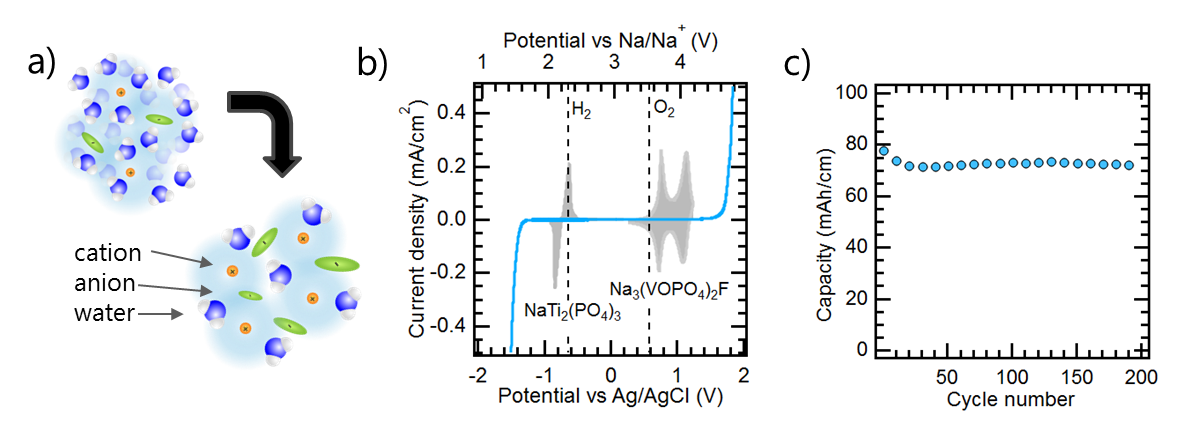Lithium-ion and sodium-ion batteries
Lithium-ion batteries enabled the success of portable electronics and find increasingly application in powering electric vehicles and in storage of electricity from intermittent renewable sources. Our research aims at increasing the energy and power density of lithium-ion batteries, improving the operational safety, and exploring alternative materials and processing routes.
As a member of the Swiss Competence for Energy Research “Heat and Electricity Storage”, our lab develops cathode materials for next-generation lithium-ion batteries with increased lithium storage capacity and reduced cobalt content. Cobalt is already classified as a critical raw material due to its high economic importance and high supply risk. We are investigating nickel-rich cathode materials, which offer higher capacity, in combination with novel electrolyte formulations to enable stable long-term cycling. We are also investigating cobalt-free cathode materials as an alternative (e.g. vanadium-based materials in a project with industry partner Belenos, a company of the Swatch group).

We are also exploring ways to replace the flammable liquid electrolyte in today’s lithium-ion batteries by a non-flammable liquid electrolyte to improve operational safety. We developed a non-flammable aqueous electrolyte for sodium-ion batteries extending the electrochemical stability window of water from 1.23 V to 2.6 V using highly concentrated aqueous salt solutions (water-in-salt). We successfully demonstrated a 2 V-class aqueous sodium-ion battery with an energy density comparable to lead-acid batteries.

Funding


[1] J. Vidal Laveda, J. E. Low, F. Pagani, E. Stilp, S. Dilger, V. Baran, M. Heere, C. Battaglia, Stabilzing capacity in NMC811/graphite full cells via TMPSi Electrolyte Additives, ACS Appl. Energy Mater. 2019, 2, 7036.
[2] M. Becker, D. Reber, R.-S. Kühnel, C. Battaglia, Water-in-salt electrolytes for aqueous lithium-ion batteries with liquid temperatures below -10 °C, Chem. Comm. 2019, 55, 12032.
[3] D. Reber, R.-S. Kühnel, C. Battaglia. A high-voltage aqueous electrolyte for sodium-ion batteries, ACS Materials Lett. 2019, 1, 44.
[4] D. Reber, R. Figi, R.-S. Kühnel, C. Battaglia. Stability of aqueous electrolytes based on LiFSI and NaFSI, Electrochimica Acta 2019, 321, 134664.
[5] R.-S. Kühnel, D. Reber, C. Battaglia. A high-voltage aqueous electrolyte for sodium-ion batteries, ACS Energy Lett. 2017, 2, 2005.
[6] D. Reber, R.-S. Kühnel, C. Battaglia, High-voltage aqueous supercapacitors based on NaTFSI, Sust. Energy & Fuels 2017, 1, 2155.
[7] R.-S. Kühnel, D. Reber, A. Remhof, R. Figi, D. Bleiner, C. Battaglia, ‘‘Water-in-salt’’ electrolytes enable the use of cost-effective aluminum current collectors for aqueous high-voltage batteries, Chem. Comm., 2016, 52, 10435.
[8] CCEM Annual Activity Report 2015 (p.38)
-
Share
